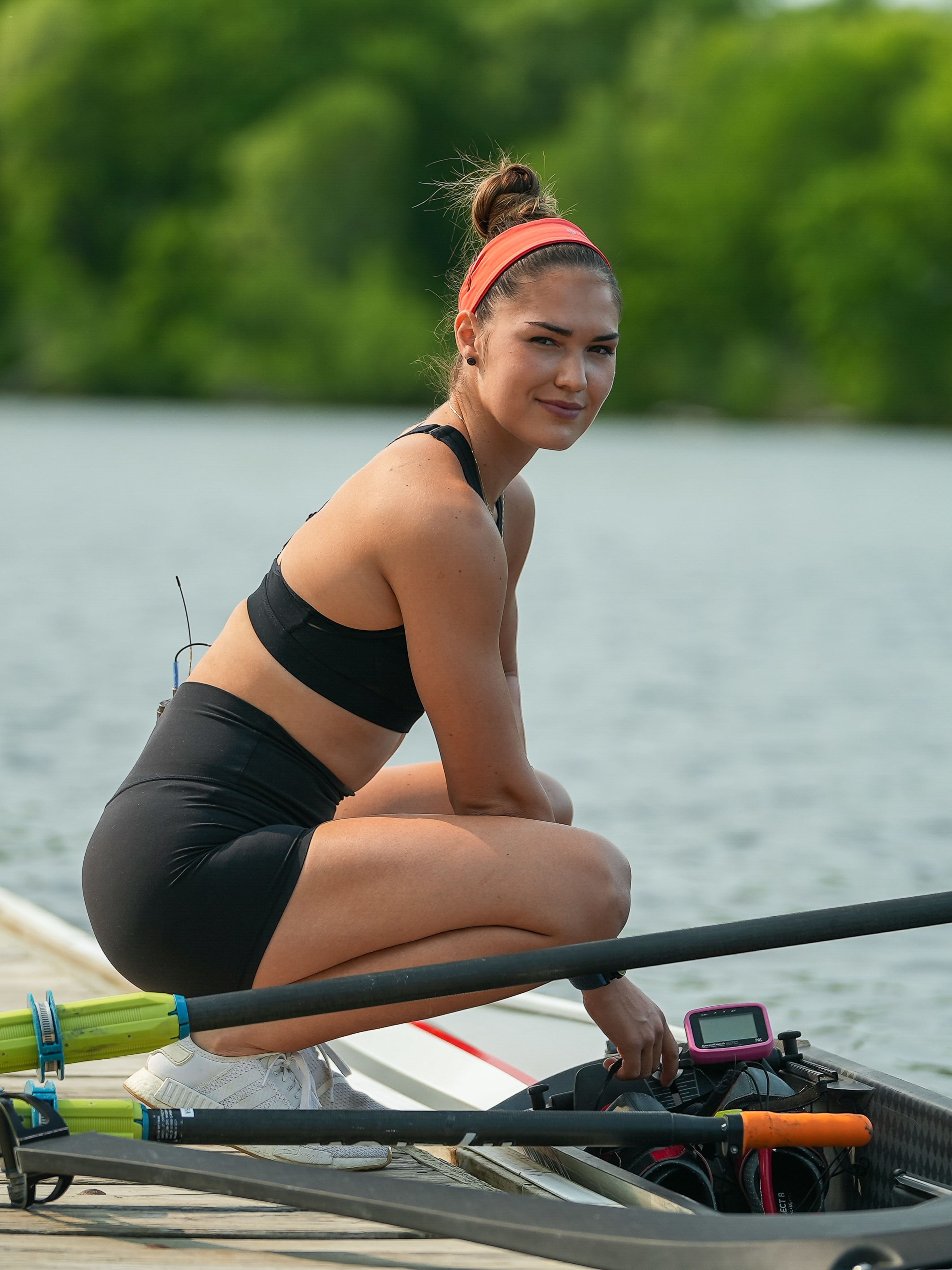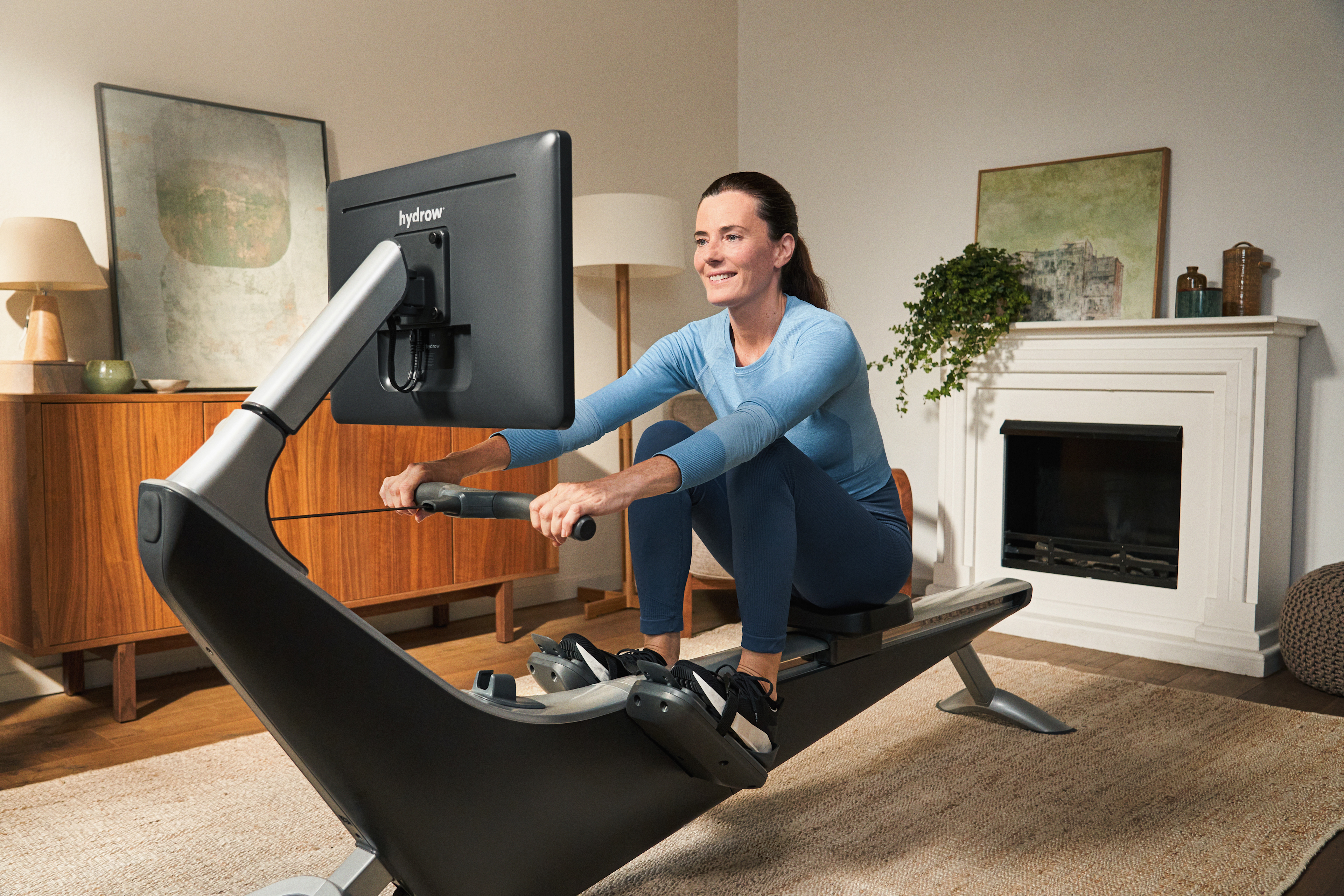What to Expect in a Beginner Rowing Workout

You’re ready to give an indoor rowing machine a try! How exciting! We’re happy you’re here. Rowing is one of the most complete total-body exercises you can do, and provides a low-impact alternative to running and other cardio options.
Now, before you start your beginner rowing workout, there are a few things to focus on to set you up for success. The most important thing when it comes to using a rowing machine is having the proper form. Proper form will not only improve the quality of your workout, it’s also going to help you avoid injury. While proper form is essential to healthy rowing, learning to row can be as easy as 1-2-3. You can learn the basics in five minutes.
It’s important to consider what an appropriate length and intensity is for your beginner rowing workout, and should consider what formats of rowing workouts will work best for you and your goals. The goal of a beginner rowing workout is to get you familiarised with proper form, to help you feel comfortable on a rowing machine, and to start strengthening the muscles used in rowing.
Before we dive in, we want to take a quick moment to discuss the experience of using a Hydrow rowing machine as a beginner.
It’s important to note that the resistance mechanism on a Hydrow rower meets you EXACTLY where you are. The harder you push, the more work you do. If you’re not pushing harder with your legs, you might not experience the “work” of your workout. By focusing your power into your legs and pushing hard, you’ll feel the burn you’re looking for.
Let’s break it down.
Use proper form
Proper rowing form has three essential components: legs, core, and arms. You need to pay attention to all three areas in each step. Beginner rowing workouts spend a lot extra instructional time on proper form to set your foundation for a healthy relationship with rowing.
Finish Position:
This is where you’ll start (and finish) your row. In this position, your legs will be straight, your core will be engaged, with your shoulders just behind your hips, and your arms drawn into your chest.
First Motion
From the finish position, you’ll extend your arms outward. This motion brings the handle back towards the front of the rowing machine.
Second Motion
Once your arms are extended, you’ll rock your upper body over your hips while maintaining your core. In this position, it’s important to keep your core engaged and your back straight. You don’t want to round your back over to lean forward. This should be a lean or hinge from the hip while you keep your chest upward and arms extended.
Third Motion
Your third motion will bring your knees to your chest. Take a moment to feel the difference between intentionally bringing your knees to your chest, versus trying to pull yourself back towards the front of your rowing machine. To keep strain off of your shins, you want to focus on bringing your knees up, not bringing yourself closer to the front of the rowing machine. This small shift will help you perfect your form and maximise your workout.
Now, pause in this position. This is what is called the “catch” position. Here, your arms should be extended, you should be gently leaning forward from the hips with a strong, engaged core and straight spine, and your knees should be to your chest. From here, we’ll reverse the movements we’ve just gone through to get us back to finishing position.
Drive your feet into the footplate/stretchers as though you're pushing yourself away from the screen. Your knees will come down to straighten your legs, your core will rock back, and your arms will be drawn to your chest.
In many rowing instructional videos or written tutorials, you’ll see this referenced as 1-2-3-3-2-1, or the “1-2-3 method.”
Pace yourself
We love a good competition as much as the next person, but it’s important to remember that a beginner rowing workout is not a race. Because these beginner workouts are designed to get you comfortable on your machine, used to using proper form, and well... to get you hooked on the awesome sport of rowing, it’s important that you pace yourself.
When we’re first learning to row, one of the things you should pay attention to is your stroke rate, which is a number that reflects the rhythm of the Athlete you’re rowing with on the Hydrow. You’ll also see this called “rhythm number.” This is measured in SPM – strokes per minute. Similar to seeing your speed on a treadmill in MPH, you’ll see SPM on your rowing machine.
So what is a “good” pace as a beginner rower? A typical range for a beginner is 18-26 strokes per minute. When you first start rowing, you should expect to be on the lower end of this range. Rather than aiming to solely increase your rhythm, you want to focus on consistency in your SPM. Try to consistently hold a steady SPM for a few minutes before increasing your speed. As you increase, continue to hold your new pace for a few minutes each time.
This gives you the opportunity to make sure your form is healthy and strong as you speed up. Speed increases as we increase the drive through the legs into the foot stretchers without changing the SPM.
You wouldn’t (or at least shouldn’t) ride down the steepest hill at full speed on a bike when you’re first learning, right? The same goes for rowing. While you’re not going to fall off your rowing machine onto a rough asphalt road or crash into a ditch, you do increase your risk of injury if your form and strength can’t support the faster speeds.
Listen to your body
There’s no straight forward rule that says “If you’ve been rowing for X amount of weeks/months/years, your workout should be X minutes long.” The best way to determine the appropriate length of time your rowing workout should be is to listen to your body.
Guided beginner rowing workouts are likely to talk you through starting slow and listening to your body. There is a higher level of attention and importance placed on proper form. These workouts may be shorter than other guided workouts, have a slower pace, or lower intensity to accommodate the focus on establishing proper form and good habits.
If you aren’t using a guided workout, you’re going to want to play close attention to your body. Start in smaller increments. Set an initial goal, even for five minutes, and see how your body feels. After your first interval, take a break and stretch, then get back on your rowing machine and continue.
As a reminder, the goal of a beginner rowing workout is not to go as far as possible, as fast as possible, for as long as possible. The goal is to get you comfortable on your rowing machine, support your development of proper form, and to bring you a great workout that you want to do again (and again, and again).
Experiencing different kinds of workouts
One of the beauties of rowing is that it truly is what you make it. Depending on what kind of machine you’re on (of course, we hope you’re on a Hydrow), there are many different types of workouts you can experience on your machine. If you’re new to rowing, it is worth the investment to spend some time with guided workouts and educational content to help perfect your form and maximise the impact of your workouts. On a platform like Hydrow’s, you can expect to see:
Unguided
Leisure paced
Higher intensity (still appropriate for a beginner)
Educational “Learn to Row”
Scenic and relaxed
Challenges & programmes like the Beginner Training Camp
As you try different beginner rowing workouts, you’ll learn which formats work best for you and motivate you to improve your rowing the most.
Rowing can feel intimidating without education and support. When you’re first learning to row – or even getting back into rowing after a hiatus – taking the time to learn and refine your form and skills is important. As you become more used to the pattern of the movements and learn to control how your body moves on a rowing machine, you’ll find that rowing workouts become second nature and connect your mind and body effortlessly.
To get you started, we’ve compiled a list of great beginner rowing workout resources:
Learn to Row Series (accessible with Hydrow Membership or a free 30-day trial)
Hydrow Personal Coaching: Learn Proper Rowing Form & Technique on Your Indoor Rowing Machine (free video playlist on YouTube)
Get To Know Hydrow Indoor Rowing Machine (Hydrow 101 playlist on YouTube)
Rowing Glossary to help you familiarise yourself with the rowing terminology





